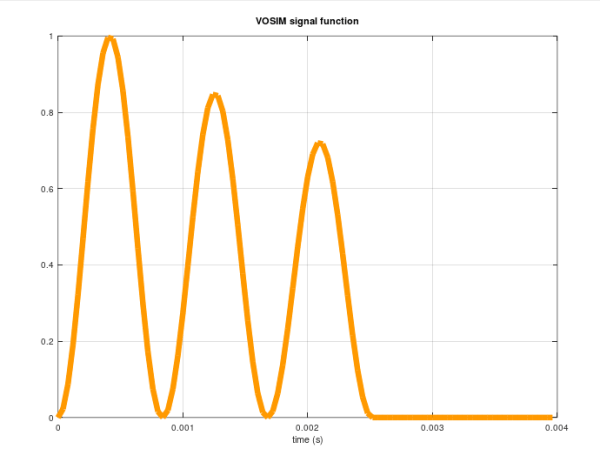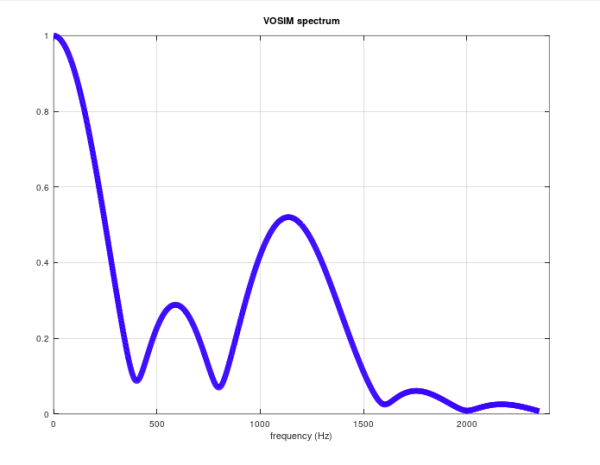
VOSIM signal with 3 pulses followed by the delay (pitch=250 Hz)

- - - WELCOME TO THIS NEW WEBSITE - - -
The VOSIM signal consists of one or more sin-square pulses followed by a delay of zero amplitude. The spectrum of the VOSIM signal contains one formant and is suitable for the synthesis of a wide range of sounds. The VOSIM model was developed around 1973 by Werner Kaegi, a Swiss composer and researcher at the Institute of Sonology (Utrecht, The Netherlands). It was a revolutionary new approach to speech and music synthesis. In this website you will find information, sound, articles and software around VOSIM.
We recommend you to use high quality headphones or speakers to enjoy these pieces to the max.
In 2020 Heinerich Kaegi and Ludger Hurts started with the VOSIM66-project. A new VOSIM sound synthesis software, based on the original ideas was written. We analyzed and recalculated old VOSIM sounds from the past and created hundreds of new sounds with a lot of enthusiasm. VOSIM66 grew further and further to fit our needs. VOSIM66 is open source and work in progress. It is for musicians who like to stretch the boundaries. Who like to explore new sounds and other ways of composing them. You can install and try it yourself.
The name VOSIM (Voice Simulation) suggests that Vosim is only suitable for the synthesis of speech-like sounds. It is correct that the VOSIM spectrum has a formant-like structure, as we find in vowel sounds. But many musical sounds have formants and thus many different sounds can be duplicated by VOSIM synthesis. Below we present you some examples of different sounds we have created with the VOSIM66 software. It is not our goal to make the duplicates as real as possible, but to give them a life that is just as lively as their original.